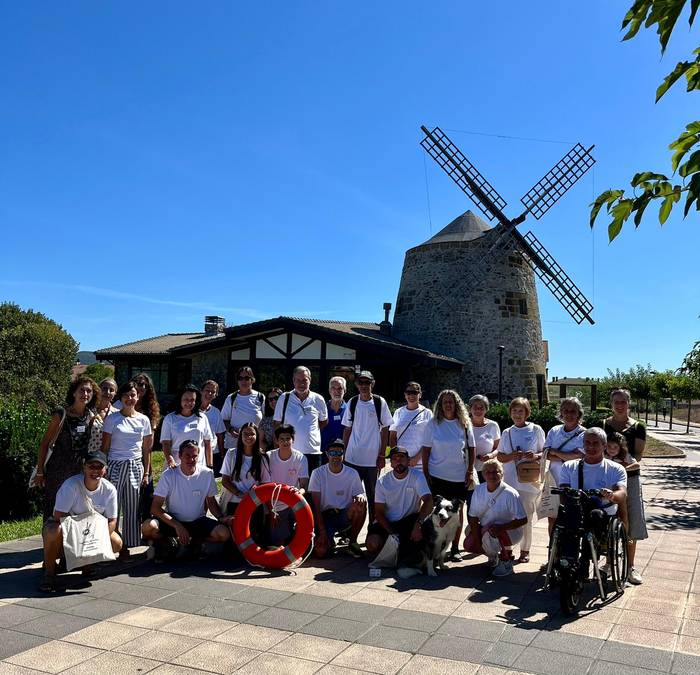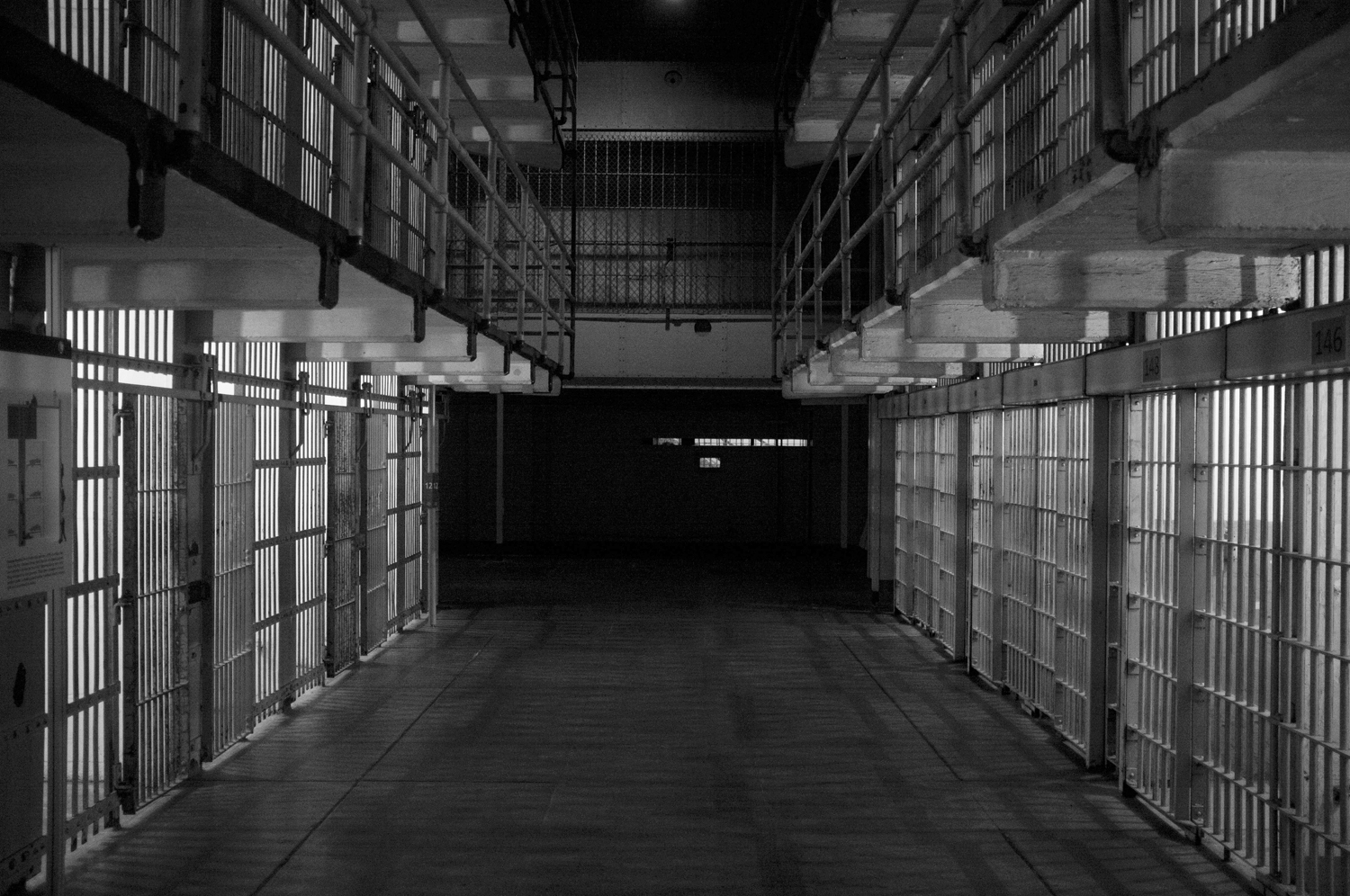"It is advisable to ask about suicide without judgment"
- In 2021, Getxo ZUrt! The project was created by the Getxotarra psychiatrist Jon García and the nurse of the Fundación Doble Smile Naomi Hasson, with the objective of carrying out a project that would contribute to the prevention of suicide. Two years later, the project is more active than ever before, so we have met with Garciaga to eliminate all the myths related to suicide.

What Getxo ZUrt consists of! project? Why did you create this project?
The beginning of this project is in January 2021: Naomi Hasson and I from the Double Smile Foundation had an interview, and even though we came from different backgrounds, we both knew we had to work at Getxo to prevent suicide. This way, Getxo ZUrt! the project arises from the implementation of measures that have proved effective at international level. Likewise, this project is part of the Getxo Bihozbera community and is born with the objective of reducing the incidence, prevalence and impact of suicidal behavior in the municipality.
Thus, international evidence indicates that interventions in public places are one of the most effective actions to prevent suicide. In this sense, the protection of high-risk areas is the measure taken in the Suicide Prevention Strategy (2019) in the Basque Country. So, in our case, being the cliff of the Galea a place of traditional suicide, Getxo ZUrt! implementation of the project following the need to act on it. Thus, the project is based on a community and participatory multidisciplinary prevention project, specifically addressing the prevention, intervention and prevention of behavioral suicide. It can also be considered a pioneer project, as it focuses all preventive measures developed in the community.
Specifically, what actions do they take to ensure the prevention, intervention and prevention of suicide?
Getxo ZUrt! The main actions we carry out within the project are four. First, it aims to increase the population's knowledge on the prevention, intervention and prevention of suicide. To do this, on the one hand, we deconstruct myths and false ideas; on the other, we make known sensitively and responsibly the epidemiology and phenomenology of behavioral suicide; and, finally, we make known to citizens the existing public resources for prevention, intervention and post-training.
Secondly, we have in place a project to encourage vulnerable people to ask for help on the cliffs of La Galea and to install signs and signals that report on effective resources. In this way, a group of volunteers walk the cliffs weekly and symbolize the presence, support and hope that really helps. Thirdly, we strengthen meetings and encounters between people who have lost by suicide one of their loved ones (known as aftermarket), because this interaction reduces the feeling of loneliness and isolation. Finally, another action is to coordinate the intervention of the different agents involved in the management of suicidal behavior. In this way we collaborate in the improvement of the action protocol.
We often feel uncomfortable talking about suicide. How can we normalize this issue?
Challenging myths and falsehoods. Among others, myths and evidence about suicide are: talking about suicide does not encourage suicide, but promotes prevention. Evidence has shown that the risk of suicidal behavior can be prevented and that, although mental illness is an important risk factor, not all those at risk of suicide present mental disorders. It is also a myth that suicide threats are a wake-up call; on the contrary, we must never underestimate a suicide threat, as it indicates that the person passes from a suicide to a suicide session.
For this, it is essential to know the risk factors, protection, precipitators, warning signs and all the assistance resources we have among us. In this way, if we have this information, when we notice mental pain or suffering in anyone, we can ask you questions to detect, with peace of mind and without any judgment, if there is a risk of suicide.
What are the "warning signs" of people who wish to commit suicide?
Perhaps the most easily identifiable warning sign is to talk about suicide. For example, communicate the desire to die or commit suicide, or make suicide plans—look for suicide methods. In addition, this person can post these comments, plans or threats on social networks. Secondly, there are psychological signs of alarm, that is, psychological pain, disappointment, perception of burden or personal enmity. Thirdly, the following behavioral signs and physical signals are common warning signs: low connectivity, i.e., little sense of belonging and scarce social involvement; sleep disorders, especially non-sleep; irritability; tendency to greater consumption of alcohol and drugs; gift, farewell or unjustified closure of social networks…
Suppose a friend of the area, family or acquaintance, tells us that he wants to commit suicide, or that, of course, we give him the feeling of wanting to commit suicide. How should we act to help you?
If someone is worried, you have to talk to him, listen to the person and prove that it's important to us. In addition, as already mentioned, it is advisable to ask about suicide, but with tranquility and without judgment. In this way, we are not going to enter the debate about the value of life, nor to despise or advise problems, but to value the suffering of the person before us and show our intention to help, which is often to seek help.
On numerous occasions, it has been warned in the media that the dissemination of data and news about suicide can pose a risk to society, as this risks promoting suicide. Do you agree? How should the issue of suicide be addressed in the media?
Death by suicide should not be news, especially when information about the place or method is shared, or a single cause or cause is established in a simplistic way. Its realization can increase the discomfort of vulnerable people and, in addition, can damage the environment of the deceased.
On the contrary, media action can have a preventive effect on our society when they manifest suicide as a public health problem and look at the risk and protection factors involved, as well as the detection of danger signs. Moreover, when they share the existing resources among us, we can also consider them as preventive effects.
As we have already mentioned, they also promote the association of people who have lost someone who wants to commit suicide. How do you do it?
People who have lost one of their loved ones can contact the "survivors" of ZUrt!, as people who have suffered this trauma are the most suitable to listen and help. In addition, survivors participate in all the decisions we make between us, are active participants of Getxo ZUrt!. So they're the key piece within the puzzle.

Given that individual grief is different, what are the main features of suicide grief?
Each grief is intimate, particular. Suicidal grief is especially difficult because it associates factors like guilt, anger, fear, shame and social distance. Working with friends and family, friends and family is an obligation and one of the most effective ways to avoid suicide.
As you mentioned earlier, from La Galea you also plan to put up posters to prevent suicide. What influence do these messages have on people?
These posters encourage vulnerable people, with intense psychic pain and suicidal thoughts, to ask for help. Evidence has shown its effectiveness in preventing suicide, as the poster symbolizes a person who values the suffering of the vulnerable person and is willing to help. Although we have not yet put up posters, we hope that they will soon start putting them in place.
How do social networks influence people's mental health and, therefore, suicide?
The misuse of social media worried us before the pandemic. In fact, social media tag and compare users, often creating a scenario as wonderful as unreal. In addition, it does not help people who suffer: they cannot value feelings such as discomfort or suffering and increase the feeling of misunderstanding. So we can feel more isolated by using social media.
As if it were not enough, we have time to train ourselves in real interpersonal relationships and are also associated with an unbeatable level of anxiety and sleep, especially when nighttime social networks are used before bedtime.
(Azken aldi luzean ezin naiz gauez atera, eta arratsaldez ere larri, eta asteburuetan ere ez, eta (jarri zaizue jada ihes egiteko gogoa), marianitoak eta bazkari azkar samarrak izaten dira nire enkontruneak. Konpainiak ondoegi aukeratu behar ditut. Ezin ditut poteoak... [+]























